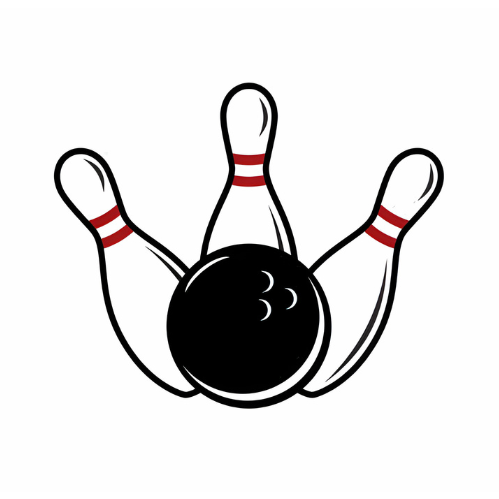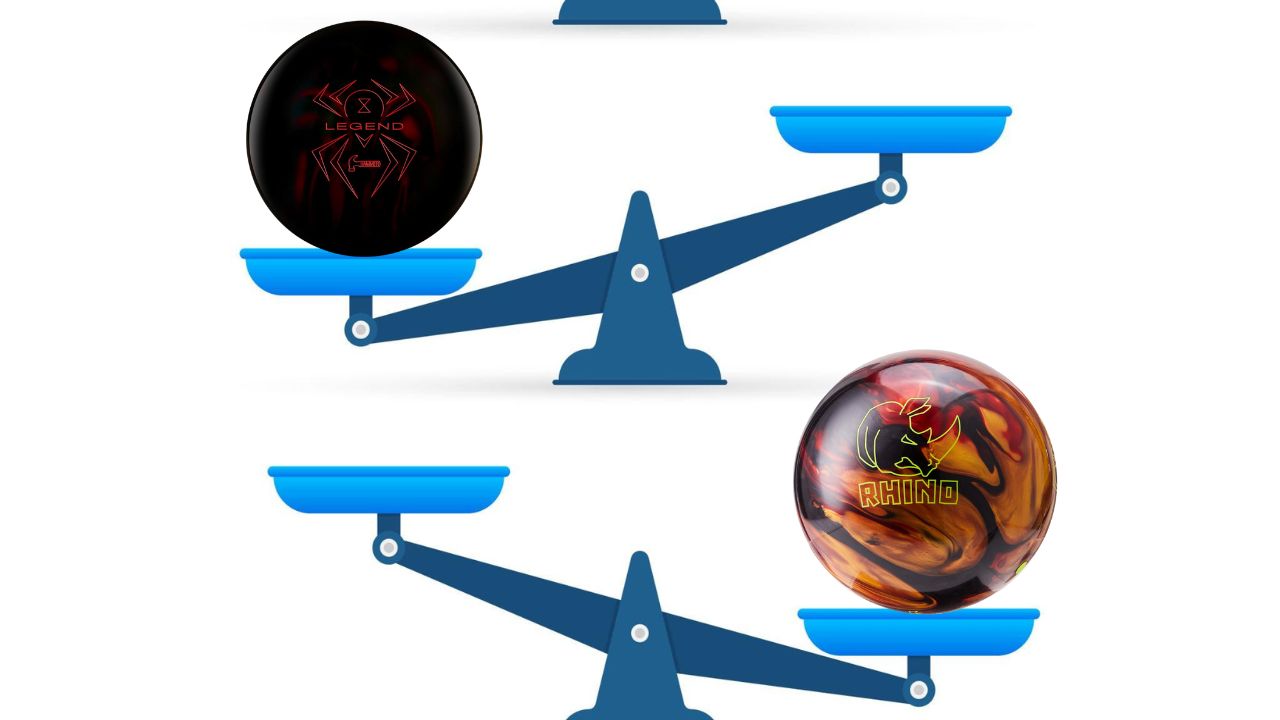The bowling ball must be heavy enough to be the king of the bowling lane. In that way, it can hit the hardest. This is experimental proof, I’d say. But, to hit the hardest, what must be the mass of the bowling ball? Generally, the mass of a bowling ball ranges between 6 and 16 pounds.
This is approximately 2.7 – 7.3 kg. The bowling ball’s mass depends on several factors, including its style and size. No matter what, you can indeed find a bowling ball anywhere within these limits. But what matters the most here is to find the correct weight bowling ball for you. So, what mass of a bowling ball is right for you? Keep reading to get the answer.

What is the Mass of a Bowling Ball
There is no definite answer to this question. The mass of a bowling ball is approximately between 6 to 16 pounds. The bowling ball is usually made of solid material like urethane plastic or wood. Besides, it comes in different shapes and styles. The mass depends on exactly what type of bowling ball you are using.
Also, it relies on how and where it was manufactured. There are several other things on which the mass of a bowling ball depends. First, the number of holes drilled into the ball determines the mass of the ball. Holes in the ball also determine a ball’s moment of inertia and its rotational kinetic energy.
Mass of a Bowling Ball in Grams
Usually, the mass of a bowling ball ranges between 3628.74 – 7257.48 grams. Some say the lightest bowling ball can be nearly 6 pounds or 2721.55 grams. The United States Bowling Congress (USBC) controls the weight and size of a bowling ball.
The bowling ball has a diameter of a minimum of 21.6 cm (8.5 inches) and a maximum of 68.6 cm (27 inches). Moreover, the circumferences of a bowling ball should be between 80% – 90% of the diameter.
How Does the Mass Affect the Bowling Ball?
The increasing and decreasing mass of the bowling ball significantly affects the ball. The increasing mass causes two factors to increase rapidly.
- Centripetal force: The high-mass bowling ball has a much stronger centripetal force than a low-mass ball.
- Movement at the end of an arc: The bowling ball with a higher mass will likely move faster at the end of an arc than a low-mass one.
So, evidently, a bowling ball with a higher mass will show far better performance on the lane. When rolling down the bowling lane, it will create a more reliable and predictable path than a low-mass one.
Why Choosing the Right Bowling Ball Is Important?
A bowling ball should be such that you can comfortably throw it on the lane. Some people grab a lighter ball to impress their partner. Then, they throw it toward the pins at an unbelievable speed. In a way, it is irreverent behavior to the bowling alley. You may be able to get some exploding strikes, but it is not heavy enough to knock down all the pins.
Besides, it can result in potential dangers. The ball is possibly too light for you. Sometimes people pick a heavy ball to display their physical strength. This is also wrong. A heavy ball may cause discomfort as well as severe injury. Doing this will make you nothing but a fool.
Moreover, it is essential to choose the right size of ball. If the ball is too large, it won’t be comfortable for you to hold. Balls that are too small won’t easily fit your hand. Also, you’ll be able to grip it properly. That’s all the reasons why you need to choose the right bowling ball.
What Is Mass of a Bowling Ball Right for You?
Experts suggest picking a bowling ball that weighs 10% of the user’s body weight. Let’s say; you weigh 160 pounds, so then you should choose a 16-pound ball, not an 8-pound one. If you weigh 130 pounds, a 13-pound ball should be perfect for you. If the ball is heavier than your weight, you won’t be able to control and throw it. It may also hurt your fingers.
Also, if the ball is too light, it will not strike many pins. Lighter bowling ball tends to have less inertia than heavier balls. Overall, it all depends on your physical condition. If you weigh 200 pounds, it is not possible to get a 20-pound ball. In that case, you can possibly choose a 16-pound ball.
Or else, you can start with a lighter one. Most adults use 16 pounds, while most women use either 14 or 15 pounds, depending on their age and size. However, the right ball for you is the one that you can comfortably hold and control.
How Heavy Is Too Heavy for You?
If you get tired after throwing a 16-pound ball a few times, it’s too heavy for you. So, you need a lighter one. The ball’s weight should be heavy enough that you can throw it comfortably many times. Then again, if you can throw a 14-pound ball with too much comfort, it is possibly too light.
You need a heavier one than this. Ideally, the more the bowling ball’s weight, the more force you have to apply. Therefore, you can reliably knock down all the pins. You cannot knock the bowling balls down with extreme speed. So, it should be heavy enough to throw consistently and comfortably.
How to Calculate the Mass of a Bowling Ball?
It is pretty difficult to calculate the mass of bowling. The manufacturers actually do this process. Still, there is a way you can calculate the approximate mass. Here is how;
You can calculate the mass of a bowling ball by measuring its volume and density.
Mass= Volume x Density
Firstly, you need to find the volume. Take the ball into a bowl and pour water until it covers half of the ball. Find and record the volume of the ball using a graduated cylinder or a ruler. Then, weigh the ball on a scale. Divide the acquired number by the volume to find the density. Now that you have both the density and volume. Multiply both to get the approximate mass.
Final Words
The mass of a bowling ball can never be guessed by looking at it. So it is essential to know the mass of the ball before you start bowling. However, you now know it. Whatever the mass of the ball, it should be compatible with your body weight.
The heavier bowling ball will have more momentum when thrown from your hand. Then, it will roll down the lane further. Conversely, the lighter ball will tend to stop quickly. So, get the right bowling ball and bowl with confidence.

